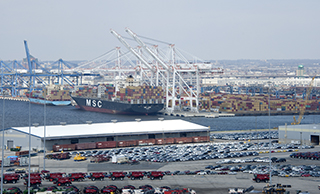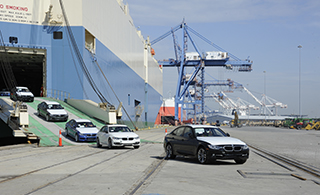Port Operations: Terminals
Main_Content
The Port of Baltimore is a mix of public and private marine terminals supported by federal, state, and local agencies as well as private port-related businesses. Approximately 2,000 vessels call on the port each year, moving approximately 38 million tons of cargo. Operations of this size depend on many landside features to support it — roads, docks, trucks, rail, cranes and storage areas.
The public terminals are owned and managed by the Maryland Port Administration (MPA). As part of the Port of Baltimore, the MPA works collaboratively with the private terminals through the Baltimore Port Alliance and its Environmental Committee. The goals of the committee include building relationships with communities and stakeholders, promoting environmental stewardship, supporting environmental education, and participating in environmentally beneficial initiatives.
The MPA manages practices on its marine terminals through the Environmental Management System, which received ISO 14001-2004 certification in 2011, and was recertified in 2017 to the new standard,
ISO 14001-2015. This certification signals that the MPA has met globally
recognized standards for environmental management.
Environmental guidance documents and advisories for operating on the MPA’s marine terminals and facilities are provided to tenants and other port users. The standards in these documents have already delivered beneficial results for the environment.

Commerce at the Port of Baltimore generates approximately $3 billion in annual wages and salaries, and more than $300 million in state and local tax revenues.

Baltimore is ranked as the top U.S. port for handling automobiles, light trucks, and farm and construction machinery.